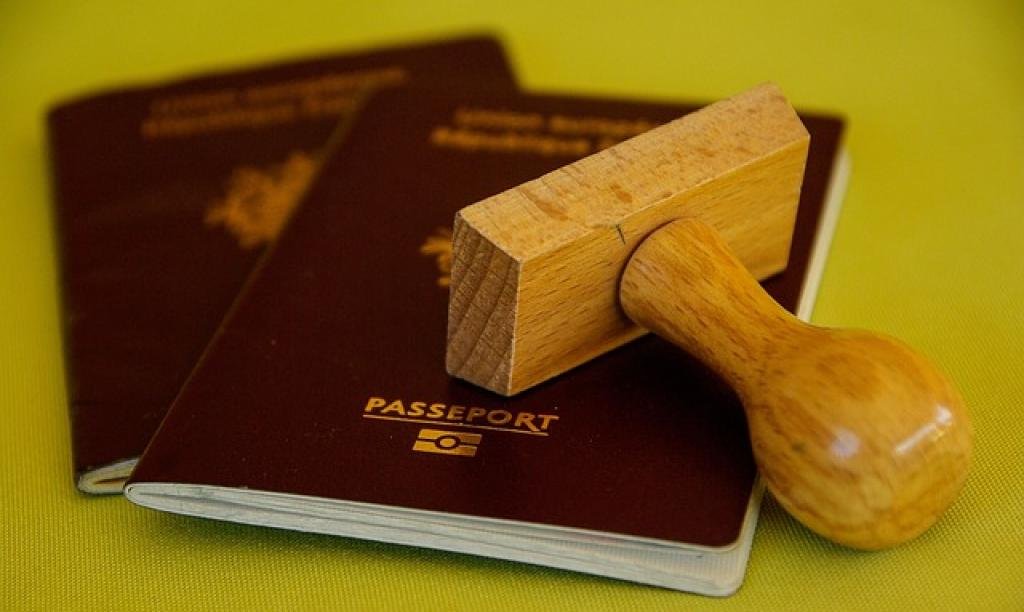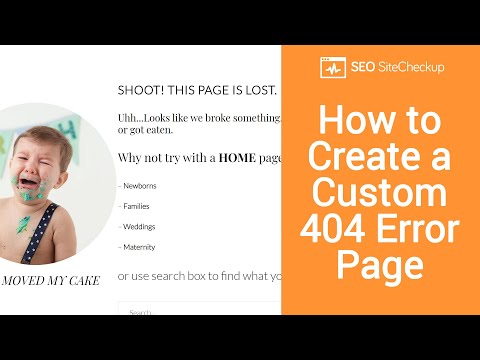How to Create a Custom 404 Page That Helps Users

We’ve all been there—clicking on a link only to hit a digital dead end: the dreaded 404 error page. This page might seem like a minor hiccup in a user’s journey, but it offers a unique opportunity to turn confusion into engagement. A well-designed 404 page isn’t just a placeholder; it’s a chance to keep visitors on your site and even guide them to the content they’re seeking.
Customizing a 404 page can transform a potential roadblock into a delightful experience. It can showcase your brand’s personality, provide helpful guidance, and turn an otherwise frustrating moment into one that surprises and delights. Users appreciate not just a clever message but practical tools to navigate back on track.
In this post, we’ll explore how you can craft an effective custom 404 page that not only acknowledges the mishap but also gently guides users toward their intended destination, ensuring that their journey continues smoothly.
Why Having a Custom 404 Page Is Important for User Experience?
When users land on a 404 page, it’s often unexpected and can be quite jarring. Imagine eagerly clicking a link only to be met with an unhelpful error message. Standard 404 pages can frustrate users and potentially drive them away from your site, increasing bounce rates and leaving a negative impression.
A custom 404 page acts as a safety net. Instead of a stark error message, you offer a welcoming touchpoint that reassures users they’re still in the right place. It’s your chance to communicate directly, turning an error into an opportunity to guide, inform, and engage.
Including navigation links, search functionality, or popular content suggestions keeps users engaged and encourages exploration. This approach reduces the chance of losing visitors and enhances their overall experience. Plus, a well-crafted 404 page can reflect your brand’s voice, leaving a lasting impression beyond the initial error.
In essence, a custom 404 page isn’t just about handling errors elegantly; it’s about preserving and enhancing the user experience. It’s a small investment that can have a significant impact on keeping users connected to your site and encouraging further exploration.
Key Elements to Include in a Custom 404 Page
A custom 404 page serves as a quick guide to redirect and inform users. A friendly, simple message acknowledging the error immediately softens any frustration they might feel. A touch of humor or creativity can also enhance the experience, making the mishap feel less like an inconvenience.
Clear Navigation Options
One of the most vital components is providing clear navigation options. A search bar is invaluable, offering users a quick way to find what they need. Additionally, including links to popular pages or content categories helps users easily explore other parts of your site.
Visual elements play a crucial role too. Imagery or branding that aligns with your site helps create a seamless transition, maintaining the consistency of their browsing experience.
Another handy feature is a contact link or form, offering users a direct way to reach out if they need further assistance. This demonstrates a commitment to user satisfaction and can help resolve issues faster.
Best Practices for Designing an Effective Custom 404 Page
Designing a custom 404 page might seem daunting, but incorporating some best practices can help create an intuitive and welcoming experience for your users. First and foremost, keep your design clean and simple. Clutter can confuse users, whereas a minimalist approach makes it easy for them to navigate.
Consistent Branding
Ensure that your 404 page aligns with your overall site branding. The colors, fonts, and logos should reflect your standard style, providing a seamless user experience even when things go a bit awry. This consistency reassures users they’re still on your site.
Personalize the error message in a way that’s both apologetic and helpful. Avoid technical jargon and instead opt for friendly language that acknowledges the mistake and directs them on how to proceed.
Interactive features like a search bar or call-to-action buttons can guide users to pertinent areas of your website, helping them find what they need without hassle. Offer options without overwhelming them.
Don’t forget mobile users. Ensure your 404 page is responsive and easy to use across all devices, preserving the quality of experience no matter how they access your site.
By focusing on user-friendly design and clear, helpful content, your custom 404 page can turn a potential obstacle into a positive touchpoint.
How to Link Back to the Homepage and Other Relevant Pages
A core function of any effective 404 page is its ability to guide users back on course. Providing a clear link to your homepage is essential; it often serves as the primary reference point when users find themselves lost. A simple, prominent button saying "Back to Home" provides a direct route for users to reset their journey on your site.
But don’t stop there—leverage this opportunity to highlight other valuable sections of your site. Links to trending articles, best-selling products, or top categories can entice users to explore further. It’s about turning their unexpected detour into a chance to discover content they might otherwise have missed.
The key is to balance providing options with maintaining clarity. Too many links can overwhelm, while too few might leave users stranded. Consider your audience and what they typically seek on your site to prioritize the most relevant pages.
Remember, the smoother the navigation process, the better the user experience. Clear, well-placed links reassure visitors that they can easily find their way. This thoughtful approach helps transform an error encounter into a positive interaction, keeping users engaged and exploring your website for longer.
Utilizing Humor or Creativity to Engage Users
Incorporating humor or creativity on your 404 page can be a powerful way to turn a user’s disappointment into delight. A witty quip or playful design element can make the unexpected misstep more memorable—often in a positive way. The aim is to lighten the user’s mood and create a genuine connection with your brand.
Humor humanizes your site, showing visitors that there’s a personality behind the digital facade. A clever joke or a funny graphic not only entertains but also conveys empathy, acknowledging the mix-up in a way that’s relatable and engaging.
Creativity doesn’t stop at humor—it also encompasses imaginative design elements. Think of an interactive or animated object that catches the eye, or a themed page that aligns with your brand’s story or current projects.
However, while humor and creativity add flair, they should never compromise the functionality of the page. Striking the right balance ensures that while users are entertained, they also have the guidance they need to navigate back on track. This thoughtful blend of creativity with usability transforms a typical error encounter into a unique brand experience—one that resonates with visitors long after they’ve moved on.

Measuring the Performance of Your Custom 404 Page
Once you’ve crafted your custom 404 page, it’s important to assess its effectiveness. Measuring performance ensures that your design and content are serving their purpose—keeping users engaged and on your site.
Start by monitoring user behavior through analytics tools. Track visits to your 404 page and examine metrics like bounce rates and time spent on the page. An effective 404 page should ideally guide users away swiftly, reducing the amount of time spent there.
Assess where users go after encountering the 404 page. Do they click through to other parts of your site, or do they leave altogether? This data highlights whether your navigation links are succeeding in propelling users forward on their journey.
Feedback mechanisms offer another layer of insight. Providing users with an option to report broken links or leave comments can help identify recurring issues and areas for improvement.
By continuously analyzing these metrics, you can make data-driven adjustments to enhance the user experience. Fine-tuning elements based on user interactions and feedback means your 404 page isn’t just a static element but evolves to meet the needs of your visitors, ensuring they remain engaged and connected with your content.
Case Studies on Successful Custom 404 Page Implementations
Examining successful 404 page implementations can provide valuable insights into what makes them effective. By analyzing different case studies, we can see how creativity and functionality merge to enhance user experience.
Airbnb’s Creative Touch
Airbnb’s 404 page exemplifies the blend of creativity and functionality. They use playful illustrations that align with their overall brand aesthetic, coupled with a friendly message. The page doesn’t just acknowledge an error; it immediately suggests popular destinations to explore, keeping users engaged and encouraging further browsing.
GitHub’s Playful Approach
GitHub employs humor by featuring whimsical graphics alongside apologetic text, maintaining the brand’s friendly and tech-savvy persona. The page is intuitive, offering users a search bar and links to various popular repositories. This ensures users are never far from useful content.
Apart from creativity, both companies ensure their pages are functional by providing clear navigation options and aligning the design with their brand identity. These cases highlight how a well-thought-out 404 page not only retains users but can even enhance their journey.
Through these examples, the potential of a dynamic 404 page becomes clear. It’s about maximizing engagement by turning what could be a frustrating moment into a positive interaction with your brand.
The Bottom Line: Enhancing User Experience Through Custom 404 Pages
In the digital landscape, no path should lead to a complete dead end, especially when an engaging opportunity lies in redesigning your 404 page. A thoughtfully crafted custom 404 page is more than just a courtesy; it’s a strategic tool to improve user interactions and extend their time on your site.
From incorporating intuitive navigation to adding a splash of humor or creativity, every element works to transform a potential frustration into a moment of delight. It’s a chance to showcase your brand’s personality and commitment to user satisfaction. While the aesthetics and tone add flavor, ensuring functional elements guide users effectively is paramount.
Not only that, but, continuous performance measurement helps optimize the page further, ensuring it evolves alongside user needs and expectations. By analyzing data and feedback, you can make tweaks that keep your 404 page a proactive part of the user journey, rather than a reactive afterthought.
Ultimately, an effective 404 page is not just about error recovery; it’s about seizing the moment to enhance user experience. It reassures visitors that even when they stray off course, they are in good hands, inviting them to explore deeper and engage further. By crafting a custom 404 page with care, you convert a simple navigational error into an enriching part of your brand’s story. This thoughtful touch can leave a lasting impression, turning a simple click into a memorable experience.



